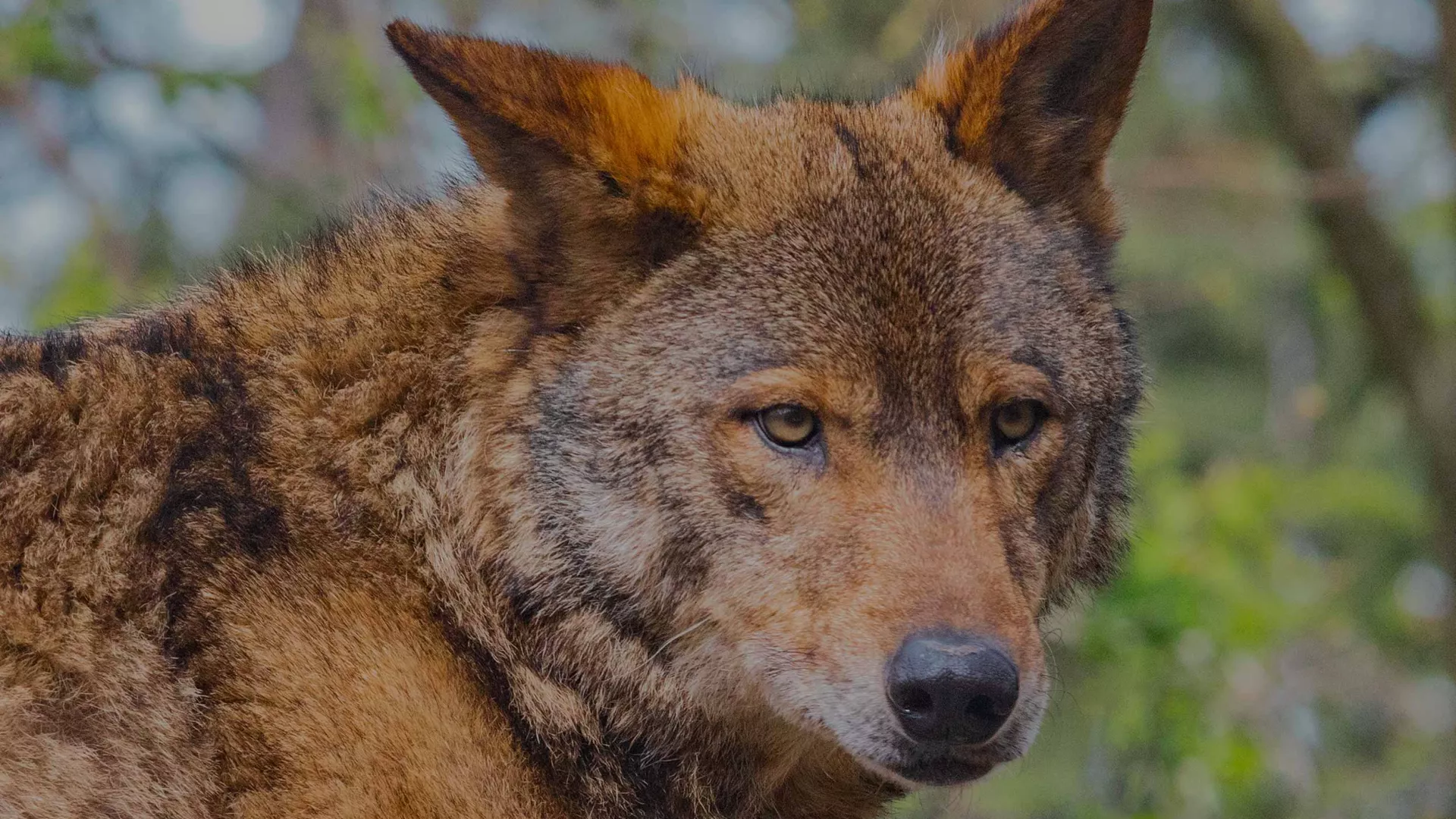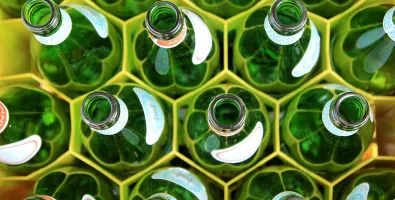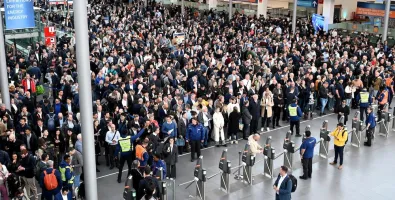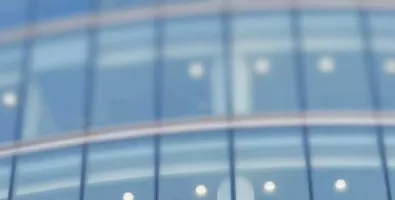
We help at creating life
With a presence in 21 countries in the areas of generation, transportation, distribution, and selling energy, EDP is integrated into all types of ecosystems over five continents.
We know the value of nature and are committed to helping to restore, maintain, and create new life in forests, coastal areas, rivers, plains, or mountains, as well as in big cities and small local communities.
We want to continue being leaders in environmental management centered on Biodiversity. We are committed to sustainable development and have a long history—always in constant renewal—of initiatives to preserve nature. Supporting the United Nations Sustainable Development Goals, namely SDG 15—Protecting Life on Earth—is an everyday mission at the EDP Group.
EDP Expertise: investing in teaching and research
Since 2009, the University of Porto (UP) has hosted the EDP Chair in Biodiversity, an annual investment in higher education, but also in research linked to ecosystems, particularly associated with EDP electrical production sites and also with distribution networks. The chair also has annual support from the Foundation for Science and Technology and is coordinated by UP's Center for Research in Biodiversity and Genetic Resources (CIBIO-InBIO), an entity in which EDP partners in various initiatives.
The EDP Chair has already given rise to dozens of scientific publications and presentations at congresses and conferences, with the results of various investigations and projects also being disseminated to the international community, particularly through the GBIF platform. Its research projects have made it possible to intervene directly in species such as the osprey, Bonelli's eagle, the Iberian wolf, or the water mole, in addition to contributing to managing Biodiversity in general.
No Net Loss: an ever-present EDP goal
It was in 2010 that EDP published its first Biodiversity Report, showing what had been done for decades in this field and the objectives for the following years. The latest version, released in 2020, looked at 2015 to 2019.
The ever-present goal is 'No Net Loss,' which means ensuring that there are no losses to Biodiversity associated with new or existing projects, always with the ambition to improve and further strengthen Biodiversity.
From fish lifts to wind speed: protecting all life
Both dams and rivers, such as wind turbines or electricity grid corridors, require care and investment to avoid any impacts on the local ecosystem, with risks also for the activity in the energy sector. EDP constantly monitors all these aspects and has created several protocols over the years, as well as initiatives to support species and the communities in which it operates.
Avifauna:
- The first EDP protocol related to birds was established in 2003, focusing on medium and high voltage power lines. That same year, a manual of good practices for the construction of new lines was created and a correction plan for 647 km of lines was launched, to minimize electrocution and the clash of birds.
- In 2002, the last osprey in Portugal was seen for the last time. 9 years later, EDP joined CIBIO in a project to reintroduce the species, with several specimens being transported by plane from Sweden and Finland to the Alqueva dam area. Since 2015, every year, chicks are born and several birds return to Portugal after migrating to North Africa, which shows that the osprey is definitely back in Portuguese lands.
- In France, EDP Renováveis opted to raise the wind turbines of the Dieppe-Le Tréport offshore project by 15 meters, guaranteeing a free corridor for the birds that fly under the blades.
- In the United States, EDP Renováveis has supported several projects to monitor the golden and bald eagles', in the neighboring states of Oregon and Washington. These studies have shown that the population of these species is not declining.
- In Spain, another EDP Renováveis initiative focused on the Bonelli's eagle. The monitoring of a species' pair near a wind farm, concluded that its territory was smaller compared to other pairs of eagles. Improvements were made to the local vegetation to enhance the feeding areas and, a few years later, there was already proven reproduction. In a parallel project, also in Spain, the wind blades were slowed down in the late afternoon, to prevent clashes and mortality, both of birds that shelter themselves in their nests and bats that come out to feed.
Fish and aquatic animals:
- Associated with the Baixo Sabor dam, EDP created a fish nursery on the Vilariça stream, in the municipality of Torre de Moncorvo. The protected spawning of various local species, such as boga and barbel, not only ensures their sustainability in the dam area, but also allows local communities to continue fishing them and making them available in restaurants.
- In EDP's portfolio of Portugal dams, the smaller plants have ladders for fish, which facilitate circulation between the two sides of the 'wall'. The large hydroelectric plants of the Douro have the so-called Borland locks installed, with the same purpose. And in Minho, at the Touvedo dam, there are fish lifts.
- In Brazil, with the construction of the Peixe Angical dam, on the Tocantins River, the new reservoir changed the geography of the region. To eliminate the impact on the river's fauna, EDP launched a project to map, monitor and relocate turtles' nests, to protect them from both predators and flooding. River fish, porpoises and hyacinth macaws also became the target of analysis and conservation. Several environmental awareness initiatives were also launched in the region.
Forests:
- The Iberian wolf is the biggest predator in Portugal and used to dominate almost the entire territory. It is currently limited to 20% of the country and reduced to around 300 wolves, with two distinct populations separated by the Douro river. In 2006, EDP Renováveis joined other wind power companies operating in the wolves territories', in financing the Iberian Wolf Habitat Conservation Association, which also started to intervene directly in the design and construction phases of parks. So that the wolves continue to howl in Portugal.
- In Asturias, Spain, resists one of the last Iberian populations of European brown bears - despite one of them having been spotted in Portugal, in 2019. EDP has had a presence in the region for several decades and the EDP Foundation in Spain has collaborated with the Asturias Bear Foundation - which is dedicated to the preservation of the species - since 1992. It also supports the Migres Foundation, which is dedicated to investigating migratory birds.
- In Brazil, in order to lessen the deforestation of forests in the construction of new distribution lines, EDP started, in 2018, to utilizes drones for the extension of electricity conductor cables. An 85% reduction in the vegetation to be cut, and a 30% reduction in the time required for construction were achieved. Drones also started to be used for regular monitoring of lines and of the ecosystems themselves.
- Since 2014, EDP developed, in Portugal, a Fire Risk Reduction Plan, to be implemented in 2,000 hectares of priority habitats, which had an 80% reduction in the number of occurrences. But, as large fires continue to be a harsh reality in Portugal, EDP regularly promotes volunteer initiatives for reforestation. Solely in 2018, following the major fires of the previous year, 6,000 trees were planted by EDP employees in those same areas.
Forests and rivers, birds, fish and land animals all matter regarding Biodiversity. But also people. Also in line with SDG 15, on Protecting Life on Earth, EDP launched, in 2017, the Junto à Terra extensive project, in the Baixo Sabor and Foz Tua territories, in Trás-os-Montes. More than a campaign to raise awareness for sustainability in schools and communities, Junto à Terra intended to strengthen the region's human capital, through the involvement of local leadership and the participation of various local partners.
At EDP, we will continue to defend nature and Biodiversity in all countries and regions where we are present, support projects and institutions dedicated to this mission, and increase awareness in schools and society in general, in small rural communities or more urbanized cities.
Now or Never






